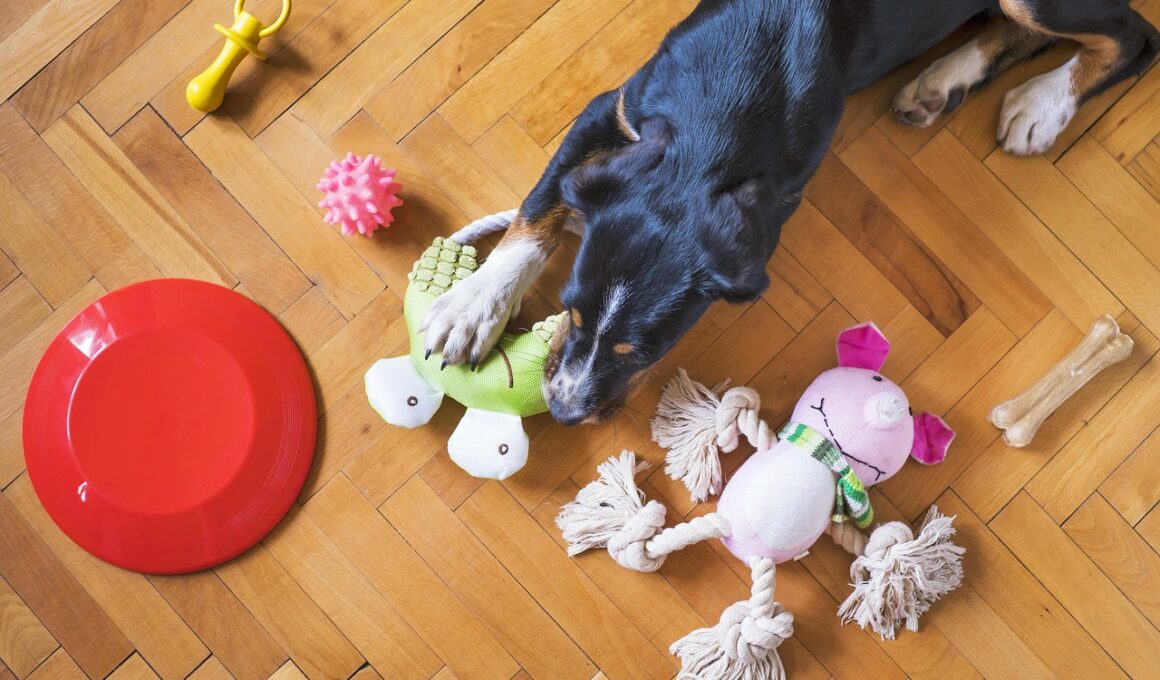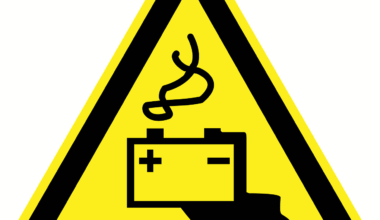The Role of Supervision in Dog Toy Safety
Ensuring the safety of your dog while they play with toys is vital for their well-being. Most dog owners may not realize that certain types of toys can pose risks to their pets. It’s essential to actively supervise your dog during playtime, as this helps prevent accidents that could lead to choking, ingesting harmful parts, or injuries. Monitoring your dog allows you to assess how they interact with their toys and ensures that they are using toys that are appropriate for their size and breed. In addition, observing your dog can help you identify any toys that may not hold up well to rough play. Some dogs can be quite aggressive chewers, leading to toy damage. This situation can create sharp edges or small pieces that can become hazardous. Regular checks and close supervision are key components in preventing these potential incidents. Therefore, choosing high-quality, durable dog toys designed with safety in mind can also make a big difference. Opt for toys made from non-toxic materials that are specifically tailored for your dog’s chewing tendencies, which will ultimately minimize risks.
When selecting dog toys, understanding safety standards is crucial. Not all toys are created equal, and some may contain harmful chemicals or materials that could be detrimental to your dog’s health. Look for toys with labels indicating they meet safety regulations, such as being BPA-free or made of non-toxic substances. Additionally, be aware of any small parts that can be easily chewed off and swallowed. Monitoring your dog’s playtime is paramount, especially with toys that have squeakers or other interactive elements that can come loose. If you notice your dog pulling apart the toy, remove it immediately to avoid risks. Utilizing guidelines provided by veterinarians and pet safety organizations can further enhance your selection process. For instance, consult your veterinarian on recommended brands or types suitable for your canine companion. Researching online for reviews on particular toys can also be beneficial. Many pet owners share their experiences with specific products, which can inform your purchasing decisions. Taking these precautions ensures a better, safer play experience for your dog. Always keep an eye on the condition of toys to ensure their safety is maintained over time.
Additionally, teaching your dog how to play safely with their toys is an integral part of toy safety. Engaging your pet in interactive games can promote a better understanding of appropriate play behavior. Consider using toys that encourage your dog to think and solve problems, as these can enhance their cognitive abilities. Rotate their toys regularly to keep them novel and exciting and provide healthy stimulation. Regular interactions not only provide mental enrichment but also strengthen your bond. However, it’s crucial to teach your dog to retrieve and drop toys appropriately. This reduces the risk of aggressive behavior that can lead to accidents during play. Establishing rules regarding toy usage helps your dog understand what is acceptable. Encourage gentle play and discourage rough behaviors like aggressive tugs or throws. If your dog tends to be overly excited during play, incorporating training commands that promote calmness is beneficial. This creates a more controlled play environment, which minimizes the chances of accidents. Opting for suitable toys for different activities will also offer variety. Taking the time to train your dog in safe play will offer long-term benefits.
Using the right types of toys based on your dog’s size and chewing habits is essential for safety. Each dog has unique characteristics that influence their interactions with toys. Smaller toys may pose choking hazards to larger breeds, while larger toys can be difficult for smaller dogs to manage. Choosing appropriately sized toys ensures that your dog can play safely without risking injury. For example, if your dog is a strong chewer, invest in durable chew toys that are designed to withstand heavy use. Additionally, review the texture of the toys you provide. Soft and plush toys may not be suitable for aggressive chewers as they can easily destroy them. Consider materials such as rubber or nylon that are tougher and adhere to established safety standards. There are toys designed specifically for heavy chewers, incorporating additional safety features. Always supervise playtime to ensure your dog does not get overly destructive. Avoid toys that can splinter or break into smaller pieces. Ignoring these purchasing guidelines can lead to dangerous situations, so prioritize safety while selecting dog toys to promote worry-free play.
Best Practices for Proper Toy Maintenance
Maintaining your dog toys is equally important as selecting safer options. Regular inspections for wear and tear can prevent hazards from developing over time. Look for fraying edges, loose seams, or any missing components that may pose risks to your dog. Damaged toys should be discarded immediately to remove potential choking or health risks. Regularly cleaning toys can also promote your dog’s safety and hygiene. Bacterial buildup can occur on toys, especially those frequently handled by your pet. Use safe cleaning solutions to wash toys as needed, and ensure they are fully dry before giving them back to your dog. Utilize designated toy bins to keep everything organized to ensure your dog finds safe toys easily. Implementing a routine for inspecting and cleaning toys contributes to a healthier play environment. Also, consider the lifespan of certain toys; if they are well beyond their intended use, it’s best to replace them. It’s helpful to keep track of your dog’s favorite toys, allowing you to monitor their condition more effectively over time. Overall, establishing a toy maintenance schedule fosters ongoing safety.
Alongside supervision and proper toy selection, it’s essential to recognize when a toy needs to be discarded. Every toy has a lifespan. Toys may seem fine on the outside but can harbor hidden dangers if used too often or improperly. Monitoring for signs of wear can inform you when a new toy is necessary. Pets may exhibit changes in behavior when playing with damaged toys. If a toy is increasingly being destroyed, replaced it to avoid potential stomach issues or injury from sharp parts. Dogs may still want to play with toys even after they’ve been ruined, making it essential to remain vigilant. Watch for decreased interest in certain toys as it may indicate a need for change. If your dog seems more comfortable with a specific play item, consider investing in multiples. This ensures they have clean, safe toys at their disposal. Discussing these behavior changes with a veterinarian can also provide insights into potential health issues. Overall, recognizing the signs of toy fatigue or safety concerns is crucial in maintaining responsible pet ownership. Don’t overlook these safety reminders!
The Importance of Responsible Pet Ownership
Being a responsible pet owner encompasses various elements, one of which is understanding the role that toys play in your dog’s life. Engaging your pet in enjoyable, safe play contributes significantly to their emotional and physical health. Providing a variety of toys enables your dog to express natural behaviors, allowing them to release pent-up energy and enrichment. Foster healthy playtime habits that offer stimulation and bonding opportunities for both you and your dog. Prioritizing safety throughout playtime can improve your dog’s quality of life significantly. By ensuring proper supervision and choosing high-quality toys, you not only contribute to their well-being but also enhance your pet’s development. Encouraging safe play also requires dedication and effort from you as a dog owner. Organize play sessions with activities that revolve around toy use, helping develop healthy play foundations. Awareness of your dog’s individual needs will inform your choices, leading to better satisfaction for both of you. Continuous education surrounding dog toy safety promotes a positive experience for your beloved pet. Ultimately, through commitment and understanding, you ensure a happy, healthy household for everyone.
Fostering an environment that supports safe play involves not only supervising but also educating others about the importance of dog toy safety. Share insights with friends and family about the best practices in selecting and maintaining dog toys. Encourage them to choose toys that prioritize the safety of their pets, and discuss the potential risks associated with neglecting supervision. By spreading awareness of safety practices, you contribute to a broader understanding of dog ownership responsibilities in your community. This collective effort can help prevent injuries not only for your own dog but also for others. Encourage those who care for dogs to implement safe play guidelines as well. Whether dog walkers, sitters, or trainers, everyone should advocate for the welfare of your furry friends. Providing resources or guides about safe toy practices can serve as a valuable resource. Ultimately, the more pet owners understand the role of supervision in toy safety, the better equipped they will be to protect their pets from mishaps. With informed ownership, we can collectively create safer environments for all dogs, thus prioritizing their health and happiness while enjoying playtime.


